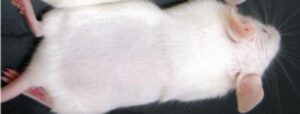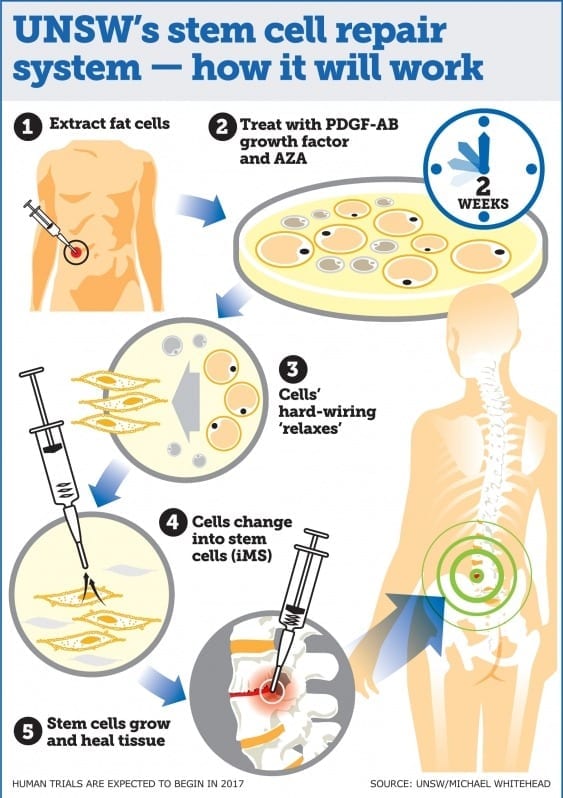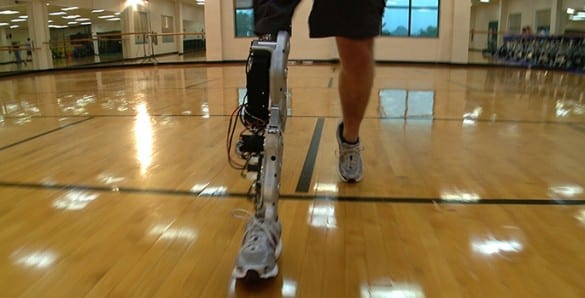
Enhancing cell metabolism was an unexpected key to tissue repair
Young animals are known to repair their tissues effortlessly, but can this capacity be recaptured in adults? A new study from researchers at the Stem Cell Program at Boston Children’s Hospital suggests that it can. By reactivating a dormant gene called Lin28a, which is active in embryonic stem cells, researchers were able to regrow hair and repair cartilage, bone, skin and other soft tissues in a mouse model.
The study also found that Lin28a promotes tissue repair in part by enhancing metabolism in mitochondria—the energy-producing engines in cells—suggesting that a mundane cellular “housekeeping” function could open new avenues for developing regenerative treatments. Findings were published online by the journal Cell on November 7.
“Efforts to improve wound healing and tissue repair have mostly failed, but altering metabolism provides a new strategy which we hope will prove successful,” says the study’s senior investigator George Q. Daley, MD, PhD, director of Boston Children’s Stem Cell Transplantation Program and an investigator with the Howard Hughes Medical Institute.
“Most people would naturally think that growth factors are the major players in wound healing, but we found that the core metabolism of cells is rate-limiting in terms of tissue repair,” adds PhD candidate Shyh-Chang Ng, co-first author on the paper with Hao Zhu, MD, both scientists in the Daley Lab. “The enhanced metabolic rate we saw when we reactivated Lin28a is typical of embryos during their rapid growth phase.”
Lin28, first discovered in worms, functions in all complex organisms. It is abundant in embryonic stem cells, expressed strongly during early embryo formation and has been used to reprogram skin cells into stem cells. It acts by binding to RNA and regulating how genes are translated into proteins.
To better understand how Lin28a promotes tissue repair, the researchers systematically looked at what specific RNAs it binds to. They initially had their sights on a tiny RNA called Let-7, which is known to promote cell maturation and aging.
“We were confident that Let-7 would be the mechanism,” says Shyh-Chang. “But there was something else involved.”
Specifically, the researchers found that Lin28a also enhances the production of metabolic enzymes in mitochondria, the structures that produce energy for the cell. By revving up a cell’s bioenergetics, they found, Lin28a helps generate the energy needed to stimulate and grow new tissues.
“We already know that accumulated defects in mitochondrial metabolism can lead to aging in many cells and tissues,” says Shyh-Chang. “We are showing the converse—that enhancement of mitochondrial metabolism can boost tissue repair and regeneration, recapturing the remarkable repair capacity of juvenile animals.”
Further experiments showed that bypassing Lin28a and directly activating mitochondrial metabolism with a small-molecule compound also had the effect of enhancing wound healing. This suggests the possibility of inducing regeneration and promoting tissue repair with drugs.
Go deeper with Bing News on:
Tissue repair
- Surrozen Provides First Quarter 2024 Financial Results and Business Update
SZN-043 Phase 1a clinical trial results to be presented at the 2024 European Association for the Study of the Liver (EASL) in MilanPreclinical ...
- Health & Wellness: Exercise discretion when using fitness supplements
Feeling great and looking amazing is a high-priority goal for most of us. Over the course of a year, fitness studios across the country will see around 100 million people join their programs in the ...
- Researchers outline how cells activate to cause fibrosis and organ scarring
New research led by Unity Health Toronto that examines how fibroblast cells in the body are activated to cause fibrosis and organ scarring has been published in Nature Reviews Molecular Cell Biology.
- RION doses first subject in Phase IIa diabetic foot ulcer therapy trial
Regenerative medicine company RION has dosed the first subject in the Phase IIa clinical trial of its purified exosome product (PEP) for the treatment of diabetic foot ulcers (DFUs). The multi-centre, ...
- Transformative Discovery Could Solve Billion-Dollar Problem of Poorly Managed Wound Healing
Scientists discover a crucial protein that enhances wound healing and muscle regeneration, a process often impaired by conditions such as diabetes and aging. Researchers have discovered an essential ...
Go deeper with Google Headlines on:
Tissue repair
[google_news title=”” keyword=”Tissue repair” num_posts=”5″ blurb_length=”0″ show_thumb=”left”]
Go deeper with Bing News on:
Tissue regeneration
- Surrozen Provides First Quarter 2024 Financial Results and Business Update
SZN-043 Phase 1a clinical trial results to be presented at the 2024 European Association for the Study of the Liver (EASL) in MilanPreclinical ...
- ‘Engineering’ OA Treatment Lands $31M Research Award
The Advanced Research Projects Agency for Health (ARPA-H) has awarded up to $31 million to researchers at Washington University in St. Louis to support the development of non-surgical osteoarthritis ...
- Dental Biomaterials: Addressing Modern Challenges and Shaping Future Procedures
Over the past decades, there has been a remarkable surge in the development and utilization of dental biomaterials, revolutionizing the landscape of modern dentistry. These materials, ranging from ...
- Transformative Discovery Could Solve Billion-Dollar Problem of Poorly Managed Wound Healing
Scientists have discovered a crucial protein that enhances wound healing and muscle regeneration, a process often impaired by conditions such as diabetes and aging. Researchers have discovered an ...
- Spectral AI nears first sales of wound care system
DeepView has been developed to take some of the guesswork out of handling serious second- and third-degree burns – to help physicians decide whether surgery is needed, for example – which at present ...
Go deeper with Google Headlines on:
Tissue regeneration
[google_news title=”” keyword=”tissue regeneration” num_posts=”5″ blurb_length=”0″ show_thumb=”left”]











